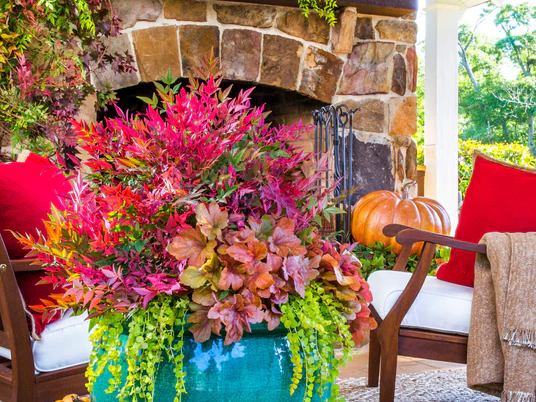Beijing Beauty Mahonia
Beijing Beauty Mahonia - 2.5 Quart is backordered and will ship as soon as it is back in stock.
Description
Description
Beijing Beauty Mahonia, a brand-new addition to the Southern Living Plant Collection for the 2025 growing season. This upright evergreen shrub offers year-round interest with its deep green, holly-like foliage, bright yellow flowers in fall and winter, and striking blue-black berries that attract a wide variety of flying friends.
Reaching a mature size of 4–5 feet tall and wide, this hardy plant thrives in USDA Zones 7–9 and prefers part shade to part sun conditions.
Our new offering of Oregon Grape is an excellent choice for a variety of landscapes. It works beautifully in woodland gardens, where its natural form and shade tolerance make it a standout. It is also a great addition to foundation plantings, offering structure and evergreen interest throughout the year. In shaded borders, this shrub pairs well with ferns, hostas, and other shade-loving plants. Its pollinator-friendly blooms make it a valuable resource for bees in the cooler months, while the berries provide winter food for birds. Additionally, it can be used in mixed evergreen screens, adding a unique textural contrast to traditional hedging plants.
This low-maintenance shrub is drought-tolerant once established and deer-resistant, making it ideal for Southern landscapes.
Beijing Beauty Mahonia Care
Hardy in USDA Zones 7-9, down to 0° Fahrenheit when established.
One of the most attractive aspects of the Beijing Beauty Mahonia is its ability to thrive in areas that receive anything from part sun to full shade. While not unique to this Mahonia these are certainly less common sunlight exposure requirements compared to most plants.
Plant in well-draining acidic soil for best results. Alkaline soils may lead to an iron deficiency and yellowing leaves. Therefore, planting in acidic to neutral soil is important.
Water 2-3 times a week during the first growing season. After your plant has a couple growing seasons under its belt, supplemental watering is only necessary in times of intense heat and drought.
Fertilize in early spring with a balanced, slow-release acidic plant fertilizer.
Recommended Companion Plants for the Beijing Beauty Mahonia
- Try this variety with some other shade-friendly plants, like the Everillo Carex and Florida Sunshine Anise. Both of these varieties have bright golden foliage that really brightens up shady spots. The Mountain Snow Pieris also handles shade well and features some gorgeous white bell-shaped blossoms in early spring.
- For partial shade plantings, consider planting it with some Hydrangeas, such as the Big Daddy Hydrangea or Bloomstruck Hydrangea. Their wide leaves and large rounded blooms contrast beautifully this Mahonia's feathery foliage.
Still looking for inspiration? Check out these Shade Garden Ideas.
Frequently Asked Questions:
"Why is my foliage turning yellow?"
- Your soil pH may be too high. When this happens, it can create an iron deficiency in your plant because it's unable to absorb nutrients properly. The result is that leaves may turn yellow and fall off over time. Pick up a soil pH test and take a sample from the base of your plant, several inches deep. If it shows up decently over a pH of 7, you should consider supplementing your soil with a soil acidifier, such as elemental sulfur.
- Your Mahonia might be getting too much sun. Mahonia can handle some sun very well, in fact, they look great with a couple to a few hours of direct sun. However, they are not full sun plants. If yours are getting too much direct sunlight, they'll fade to a yellow-green to yellow and eventually, the plant might expire. Move them or figure out a way to give them more shade.
"Why isn't my Mahonia flowering?"
Mahonia can bloom from late fall to late winter, depending on the weather you're having and where it's planted. So our first suggestion would be to consider that it hasn't gotten around to it yet, or it may have bloomed already if you recently bought the plant. However, if fall and winter came and went without any flowers, there's likely something else at play.
Dehydration is a common cause for a lack of flowers. Ensure that your plant is staying properly hydrated throughout the year. They need water to produce flowers and will often drop their flower buds if they are dehydrated for too long.
Care & Use
Care & Use
Spacing Recommendations
Spacing Recommendations
-
Scientific Name
-
Hardiness Zone7, 8, 9
-
Sun ExposurePart Sun to Part Shade
-
Evergreen or DeciduousEvergreen
-
FeaturesFlowering, Shade Tolerant, Attracts Birds / Butterflies
-
Feature ColorGreen, Yellow
-
UsesAccent, Container, Mass Planting
-
Water NeedsMedium
-
Bloom SeasonWinter
Growing Zones : 7, 8, and 9


Southern Living Plants







